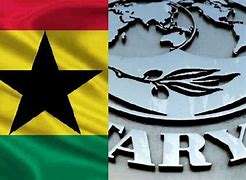The magical appreciation of the Ghanaian cedi in the final month of the year, December, was not enough to hand the cedi a respectable position on the continent and the world at large. Unfortunately, the cedi ended 2022 as the second weakest currency in Africa and the 4th worst in the world.
The cedi posted a year-to-date loss of 38.86 percent to the United States dollar at the end of the year 2022- the worst in the history of the cocoa and oil producing West African country. As a result of this abysmal performance, Bloomberg classified the cedi as the currency with the “Worst Spot Returns” in 2022.
A cursory look at the statistics revealed that on the Global level, the local currency placed 145th, while the Sierra Leone Leone came 146th and the Argentina Peso and Sierra Lankan Rupee placed 147th and 148th respectively.
In Africa, the currencies with the worst spot returns are as follows: the Kenyan Shilling (-8.32%), The Gambian Dalasi (-15.28%), Malawian Kwacha (-20.51), New Sudanese Pound (-22.87%), Egyptian Pound (-36.46%), Ghana Cedi (-38.36%) and Sierra Leone Leone (-40.58%).
However, one thing is common with these countries– they all have challenges with their economies as debt levels have become unsustainable, whilst budget deficits worryingly enlarged in the just ended year.
However, for the Best Spot Returns, the Guinea Franc came on top with 7.67 percent, whereas the Somali Shilling placed second on the continent with 1.77 percent. Meanwhile, the Mozambique New Metical (0.37%), Djibouti Franc (-0.08%), Tanzania Shilling (-1.05%), Congolese Franc (-1.13%) and Rwanda Franc (-3.87%), were the strongest currencies in Africa in 2022 in that order.
In 2022, the Ghana cedi came under severe pressure, losing over 50% in value at a point in time before a resurgence in December, following a Staff-Level Agreement reached between the International Monetary Fund and the Government of Ghana. This reduced its year-to-date losses significantly.
Prior to that, the Finance Minister, Ken Ofori-Atta announced the launch of the Domestic Exchange Programme.
The local currency, thus, ended 2022, selling at about GH¢11.60 on the average to the American ‘greenback’ in the retail or forex market.
Appreciation Not Supported
That notwithstanding, some analysts believed that the cedi’s resurgence in December 2022, was not fundamentally supported, but rather due to prevailing uncertainty and speculation.
Analysts stipulated that an inflation of more than 50 percent coupled with consecutive years of high budget deficit resulting in debt distress and forex reserves cover of less than 3-months of import cover, caused the cedi to be more vulnerable to depreciation rather than appreciation. They, however, argued that a stable cedi in 2023 will depend largely on International Monetary Fund support-programme.
The cedi’s woes began as far back in the first quarter as the Ghana cedi lost 16.86 percent in value to the US dollar on the interbank market and over 20 percent in the retail forex market. This ranked the local currency as the worst among African currencies in the first quarter. However, for the timely intervention by the Bank of Ghana, the situation could have been worse.
However, the rate of depreciation of the cedi slowed down in May and June 2022 after stern monetary actions from the Bank of Ghana coupled with some fiscal measures to halt the free fall in the first four months of 2022.
The situation spiraled out of control again and in the first nine months of 2022, the cedi lost 40.05% in value to the US dollar, ranking it as the second worst performing currency in the world in the 147th position.
The situation of the cedi is a great concern for both business men and the population as a whole. With the new year set in motion, maintaining the value of the cedi must be the utmost priority for the government and policy makers to give relief to Ghanaians.



















